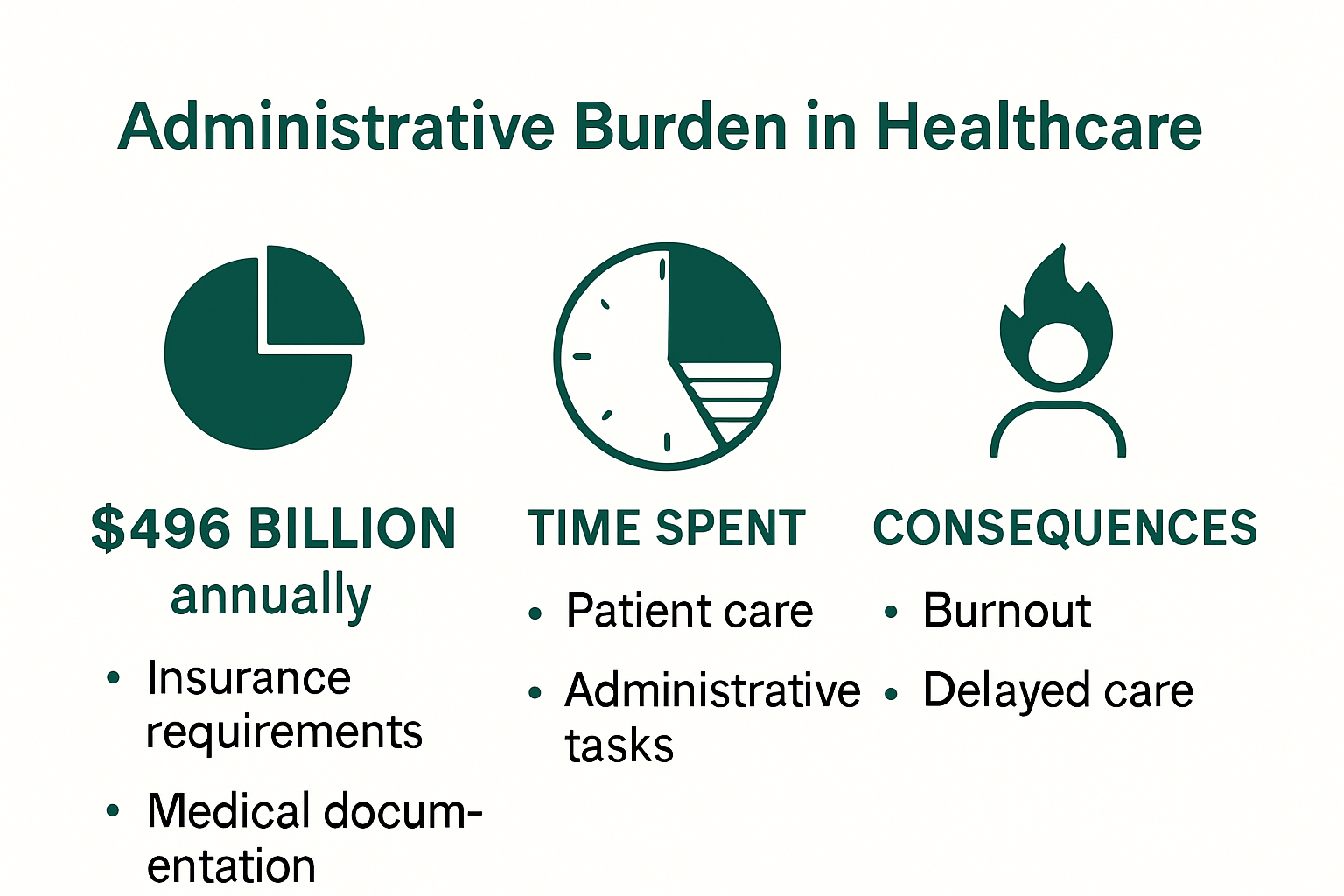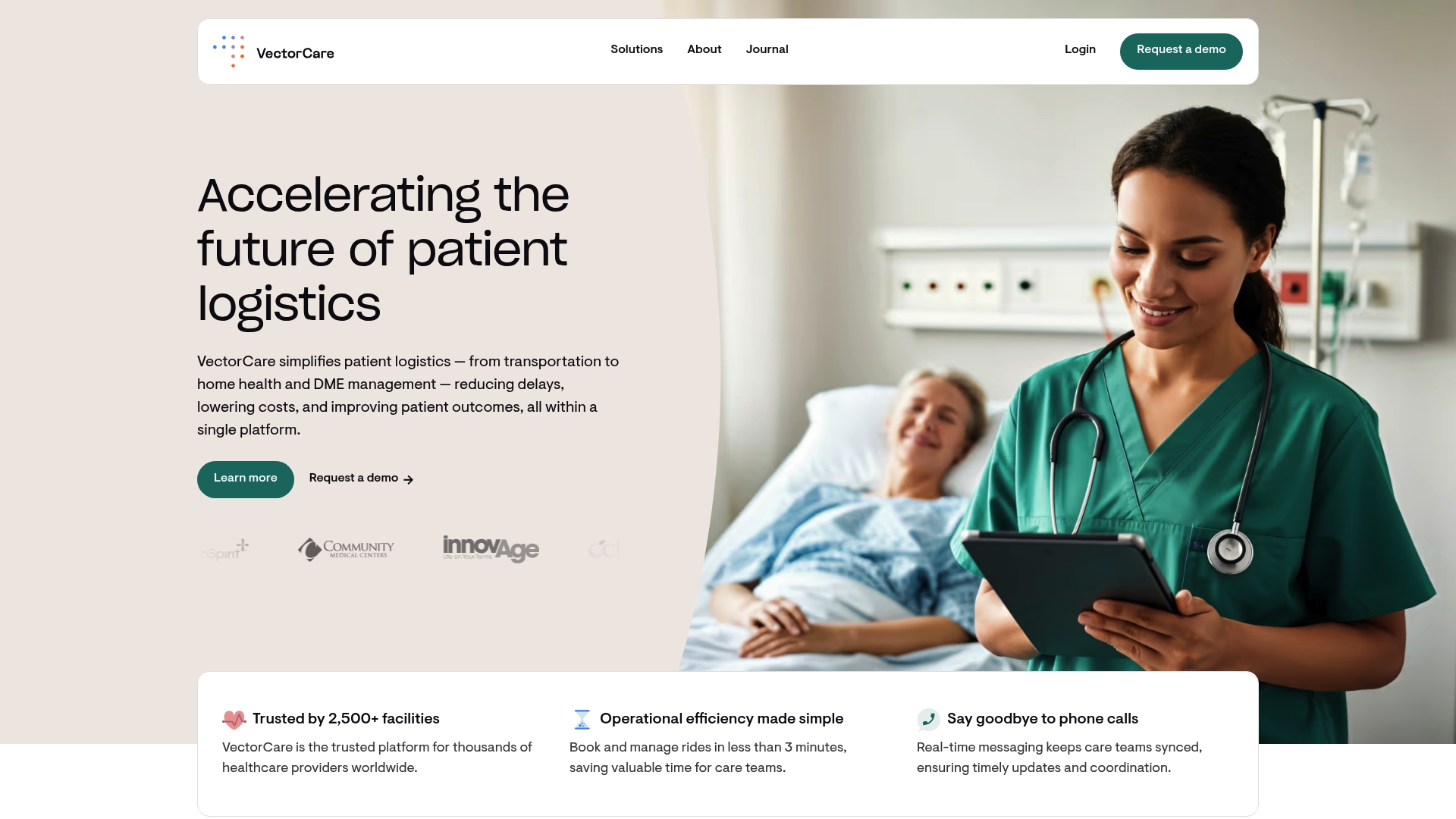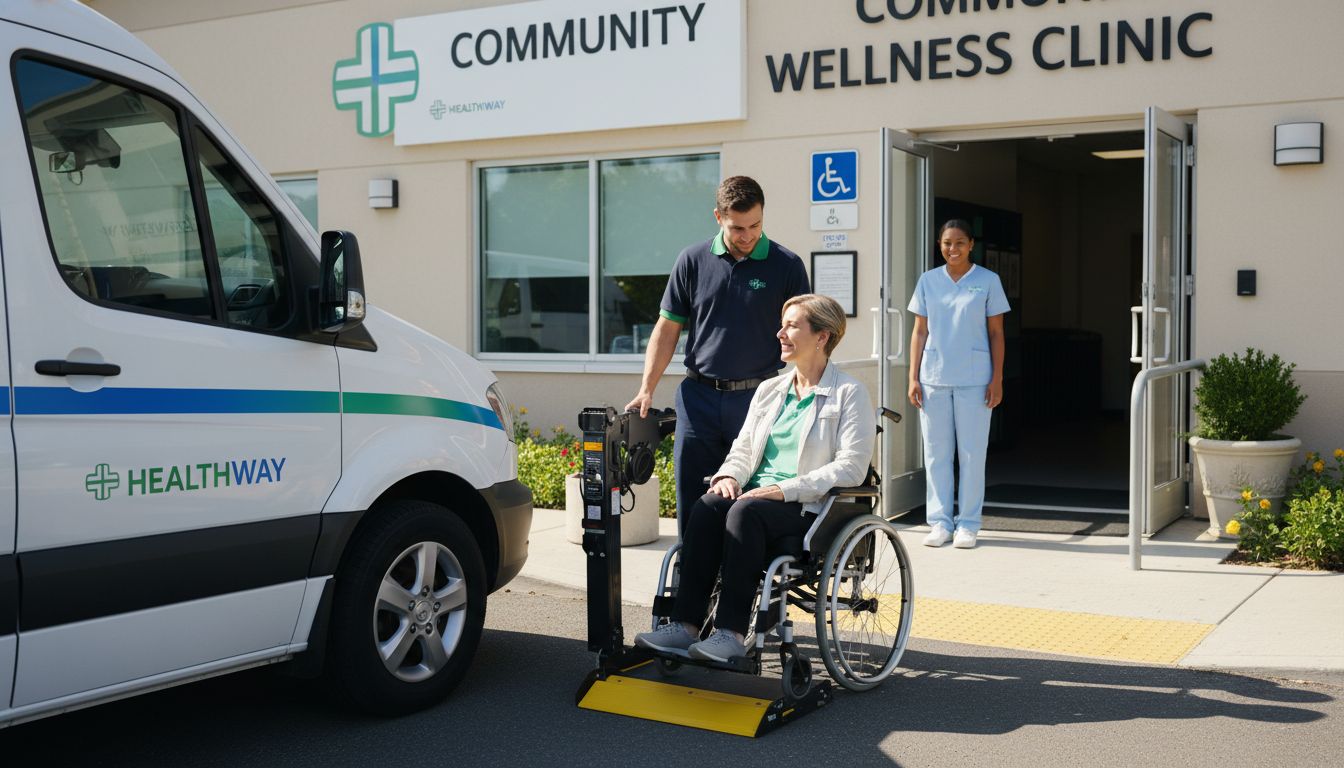Reducing Administrative Burden for Healthcare Providers in 2025

Healthcare providers spend nearly $496 billion each year just on administrative tasks. That number is bigger than the GDP of some countries. Yet, the real shock is how this mountain of paperwork pulls doctors and nurses away from patient care and leads to record levels of burnout. Streamlining these hidden hassles not only saves money but might actually save lives.
Table of Contents
- Understanding Administrative Burden In Healthcare
- Key Challenges Faced By Healthcare Organizations
- Effective Strategies For Streamlining Administration
- Leveraging Technology For Compliance And Efficiency
Quick Summary
| Takeaway | Explanation |
|---|---|
| Reduce administrative costs | Prioritize reducing the $496 billion spent annually on administrative tasks to improve healthcare efficiency. |
| Embrace technological solutions | Implement AI and integrated systems to automate and streamline documentation processes effectively. |
| Standardize workflows | Adopt process standardization to reduce processing time by up to 40%, enhancing interdepartmental coordination. |
| Invest in staff training | Foster a culture of efficiency and continuous learning to engage staff in adapting to technological innovations and regulatory challenges. |
| Enhance compliance tracking | Utilize advanced technologies for real-time regulatory updates and documentation, minimizing errors and reducing administrative burden. |
Understanding Administrative Burden in Healthcare
Healthcare providers face unprecedented challenges navigating complex administrative processes that consume significant time and resources. The administrative burden represents a critical systemic issue undermining healthcare efficiency and provider productivity.

The Financial and Operational Impact
The scale of administrative overhead in healthcare is staggering. Research from the Center for American Progress reveals that U.S. healthcare payers and providers spend approximately $496 billion annually on billing and insurance-related costs, with an estimated $248 billion considered excessive administrative expenses. These numbers highlight a profound inefficiency deeply embedded in the healthcare system.
Administrative tasks consume substantial professional time that could otherwise be dedicated to direct patient care. Physicians, nurses, and support staff find themselves increasingly trapped in documentation, coding, billing, and compliance reporting rather than focusing on clinical responsibilities. This misallocation of human resources not only reduces overall healthcare quality but also contributes to widespread professional burnout.
Professional Burnout and Patient Care Consequences
The American College of Physicians emphasizes that excessive administrative tasks divert critical attention from patient care, potentially leading to physician early retirement or reduced participation in insurance plans. A national survey published in the National Library of Medicine underscores the widespread impact, indicating that nearly 75% of insured nonelderly adults reported engaging in health care-related administrative tasks, with 24.4% experiencing delayed or foregone care as a result.
The administrative burden extends beyond individual frustration. It represents a systemic challenge that impacts healthcare accessibility, quality, and overall patient outcomes. Providers spend disproportionate time managing paperwork, navigating complex insurance requirements, and maintaining compliance documentation instead of delivering direct medical care.
Technological and Structural Solutions
Addressing administrative burden requires a multifaceted approach combining technological innovation, process redesign, and strategic workflow optimization. Healthcare organizations must invest in intelligent systems that automate repetitive tasks, streamline documentation processes, and reduce manual interventions. Emerging technologies like artificial intelligence, machine learning, and integrated digital platforms offer promising solutions for reducing administrative complexity.
Effective reduction of administrative burden demands collaborative efforts from healthcare providers, technology developers, insurance companies, and regulatory bodies. By recognizing the profound impact of administrative inefficiencies and implementing strategic interventions, the healthcare industry can redirect focus toward its fundamental mission: providing high-quality, patient-centered care.
Key Challenges Faced by Healthcare Organizations
Healthcare organizations navigate an increasingly complex operational environment characterized by mounting administrative challenges that significantly impact their efficiency, financial sustainability, and ability to deliver quality patient care.
Regulatory Compliance and Documentation Complexity
Comprehensive research from the National Institutes of Health reveals that US healthcare providers confront substantial administrative burdens stemming from intricate regulatory requirements and extensive documentation mandates. These challenges create a multifaceted ecosystem of compliance that demands meticulous attention and substantial organizational resources.
Healthcare organizations must simultaneously manage multiple layers of documentation including patient records, insurance claims, regulatory reporting, quality metrics, and risk management protocols. Each documentation stream requires precise data entry, verification, and maintenance. The complexity increases exponentially with varying requirements across different healthcare sectors, insurance providers, and governmental agencies.
Technology Integration and Interoperability Challenges
Electronic health record (EHR) systems represent both a potential solution and a significant challenge for healthcare organizations. While designed to improve information management, these systems often create additional administrative complexity. Disparate technological platforms struggle to communicate effectively, requiring manual intervention and creating potential data integrity risks.
Key technological integration challenges include:
- Incompatible systems preventing seamless data exchange
- Manual data transfer consuming significant administrative time
- High implementation costs for comprehensive technological upgrades
- Training requirements for staff adaptation to new technological platforms
Financial and Operational Resource Allocation
The administrative burden directly impacts healthcare organizations’ financial and operational strategies. Resources traditionally allocated to direct patient care are increasingly diverted toward managing complex administrative processes. This shift creates a challenging economic model where administrative overhead continues to expand.
Research from healthcare management experts indicates that organizations spend approximately 25-30% of their total operational budget managing administrative functions. These expenses include technological infrastructure, compliance personnel, documentation systems, and ongoing staff training.
Moreover, the persistent administrative challenges contribute to increased staff burnout, higher turnover rates, and reduced organizational efficiency. Healthcare leaders must develop innovative strategies that balance regulatory compliance with operational effectiveness, leveraging technology and process optimization to mitigate these systemic challenges.
Addressing these multifaceted challenges requires a holistic approach that combines technological innovation, strategic process redesign, and a commitment to streamlining administrative workflows. Successful healthcare organizations will be those capable of transforming administrative complexity into strategic operational advantage.
To help clarify and compare the key administrative challenges faced by healthcare organizations, the table below summarizes the main categories and their associated issues as outlined above.
| Challenge Category | Description | Example Issues |
|---|---|---|
| Regulatory Compliance & Documentation | Managing complex rules and required documentation across agencies and insurers | Multiple record streams, reporting, quality metrics |
| Technology Integration & Interoperability | Difficulty in connecting and updating different electronic systems | Incompatible platforms, manual transfers, high costs |
| Financial & Operational Resource Allocation | Diverting resources from patient care to administrative processes | High admin spend, staff burnout, budget strain |
Effective Strategies for Streamlining Administration

Healthcare organizations are increasingly adopting innovative approaches to reduce administrative complexity and optimize operational efficiency. Strategic interventions can dramatically transform administrative workflows and redirect resources toward patient care.
Technological Automation and Integration
Research from the Healthcare Information and Management Systems Society demonstrates that advanced technological solutions can significantly reduce administrative overhead. Intelligent automation platforms leverage artificial intelligence and machine learning to streamline repetitive tasks, minimize manual data entry, and enhance overall operational accuracy.
Key technological strategies include implementing comprehensive digital platforms that integrate multiple administrative functions. These systems enable seamless data exchange between different departments, reducing redundant documentation and minimizing potential errors. Automated workflow management tools can track documentation processes, generate real-time compliance reports, and provide actionable insights for continuous improvement.
Process Standardization and Workflow Optimization
Critical process standardization approaches include:
- Centralized documentation protocols ensuring consistent information management
- Uniform data collection methodologies reducing variability across departments
- Standardized communication channels improving interdepartmental coordination
- Clear escalation and approval workflows minimizing bottlenecks
Research from the American Hospital Association indicates that organizations implementing comprehensive workflow standardization can reduce administrative processing time by up to 40%. This approach requires collaboration across different organizational levels to develop and implement consistent, efficient protocols.
Training and Cultural Transformation
Technological solutions alone cannot address administrative challenges. Successful organizations recognize the critical importance of human capital in driving administrative efficiency. Comprehensive training programs that emphasize digital literacy, process understanding, and continuous improvement are essential.
Healthcare leaders must cultivate a culture that values efficiency, embraces technological innovation, and prioritizes streamlined administrative processes. This cultural transformation involves developing employee skills, creating supportive learning environments, and establishing performance metrics that reward administrative optimization.
Moreover, ongoing professional development programs can help staff adapt to evolving technological platforms, understand complex regulatory requirements, and develop skills necessary for navigating increasingly sophisticated administrative ecosystems.
The most successful strategies for reducing administrative burden combine technological innovation, process standardization, and continuous learning. By adopting a holistic approach that addresses technological, procedural, and human factors, healthcare organizations can transform administrative challenges into opportunities for enhanced operational excellence.
The following table summarizes key strategies for administrative simplification and their primary benefits, as discussed in this section.
| Strategy | Main Focus | Key Benefits |
|---|---|---|
| Technological Automation & Integration | Implementing AI, automation, digital tools | Faster processes, reduced manual entry |
| Process Standardization & Workflow | Consistent protocols and procedures | Up to 40% decrease in admin time, fewer errors |
| Training & Cultural Transformation | Staff development, efficiency culture | Improved adoption, sustained efficiencies |
Leveraging Technology for Compliance and Efficiency
Healthcare organizations are increasingly turning to advanced technological solutions to address complex compliance requirements and enhance operational efficiency. The strategic integration of cutting-edge technologies offers unprecedented opportunities to transform administrative processes and reduce organizational burden.
Regulatory Compliance through Advanced Technologies
The Centers for Medicare & Medicaid Services has championed initiatives promoting technological interoperability to streamline healthcare administrative processes. Application Programming Interfaces (APIs) have emerged as a critical tool, facilitating efficient electronic data exchange among payers, providers, and patients.
These technological interventions enable real-time information sharing, reducing manual documentation and minimizing compliance-related errors. Automated compliance tracking systems can now monitor regulatory changes, update documentation requirements, and generate comprehensive reports with minimal human intervention. This approach not only reduces administrative overhead but also ensures more consistent adherence to evolving healthcare regulations.
Artificial Intelligence in Administrative Optimization
Research published in PubMed highlights the transformative potential of artificial intelligence in mitigating administrative burdens within healthcare systems. AI technologies demonstrate remarkable capabilities in automating routine tasks, optimizing billing processes, and enhancing quality assurance mechanisms.
Key AI-driven administrative optimization strategies include:
- Automated billing and claims processing
- Intelligent document management systems
- Predictive compliance monitoring
- Real-time error detection and correction
Artificial intelligence algorithms can analyze complex datasets, identify potential compliance risks, and recommend proactive interventions. These systems learn from historical data, continuously improving their accuracy and efficiency in managing administrative workflows.
Integrated Technological Ecosystems
Successful technological implementation requires more than individual solutions. Healthcare organizations must develop comprehensive, integrated technological ecosystems that seamlessly connect different administrative functions. This approach involves creating robust platforms that can communicate across various departments, ensuring consistent data management and reducing fragmentation.
Integrated technological solutions enable healthcare providers to transform administrative challenges into strategic opportunities. By leveraging advanced technologies, organizations can redirect resources from manual administrative tasks toward patient care, innovation, and strategic development.
The future of healthcare administration lies in intelligent, adaptive technological systems that understand organizational complexities, anticipate regulatory changes, and provide flexible, efficient solutions. Embracing these technological innovations represents a critical strategy for healthcare organizations seeking to optimize their operational effectiveness and maintain competitive advantage in an increasingly complex healthcare environment.
Frequently Asked Questions
What is the administrative burden in healthcare?
The administrative burden in healthcare refers to the extensive time and resources healthcare providers spend on tasks such as documentation, billing, compliance reporting, and insurance claims, which detracts from their focus on patient care.
How much does the U.S. healthcare system spend on administrative tasks?
The U.S. healthcare system spends approximately $496 billion annually on administrative tasks, highlighting a significant inefficiency within the overall healthcare delivery model.
What are some strategies to reduce administrative burden?
Strategies to reduce administrative burden include implementing technological automation, standardizing processes and workflows, providing staff training, and leveraging integrated technological ecosystems for compliance and efficiency.
How can technology help streamline administrative processes?
Technology can help streamline administrative processes by automating repetitive tasks, enhancing data integration, enabling real-time compliance tracking, and reducing manual data entry, leading to improved operational efficiency and reduced administrative costs.
Transform Healthcare Administration with VectorCare’s Integrated Platform
Is your organization struggling with growing paperwork, disconnected systems, or staff burnout from repetitive administrative tasks? The article “Reducing Administrative Burden for Healthcare Providers in 2025” highlights how overwhelming documentation, fragmented workflow, and regulatory compliance steal time away from patient care and hit operational costs hard. Providers face mounting pressure to automate tasks, integrate workflows, and improve outcomes. But finding the right technology partner to deliver these solutions can be challenging.

Experience the difference with VectorCare. Our digital platform brings together all the critical tools your team needs, from automated patient transportation scheduling to real-time communication and robust data insights. Cut the paperwork and empower your staff with a unified, no-code solution designed to drive efficiency, ensure compliance, and boost patient satisfaction. Ready to take the next step toward a truly connected operation? Learn more about how VectorCare can help you streamline workflows and reduce administrative burden today. Visit VectorCare’s website or explore our digital platform here to see how you can transform your organization now.



